All this is taking place on a hillside. Far in the distance you can see Nanjing. If you look long enough, you can almost see the city growing like a stop-frame animation. Around us, a forest ranges to the crest of the hill above.
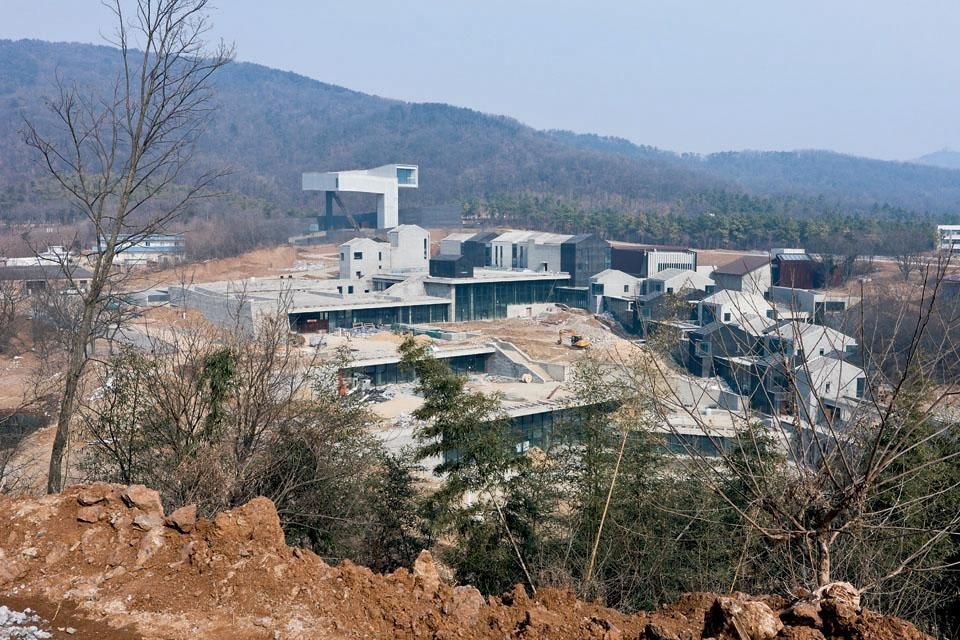
Soon, however, they will crystallise into an array of signature architecture. Up on the ridge there is a brutalist concrete frame that will be Ai Weiwei's artist studios. Over there, on the recently dug artificial lake, is a rectangular platform on stilts that will be one part of a SANAA villa. Down the hill is what looks like an exquisite oriental timber boat of some type, but is actually a villa designed by Mexican architect Alberto Kalach. It goes on: Zhang Lei, Mathias Klotz, Odile Decq, Sean Godsell, David Adjaye. These villas circle bigger buildings—a convention centre by Isozaki and a hotel by Sottsass. At the highest point of the site is the project's cultural anchor, a marker in programme, form and name that signals CIPEA's high-culture-among-nature strategy. And it's that that I've come to see.
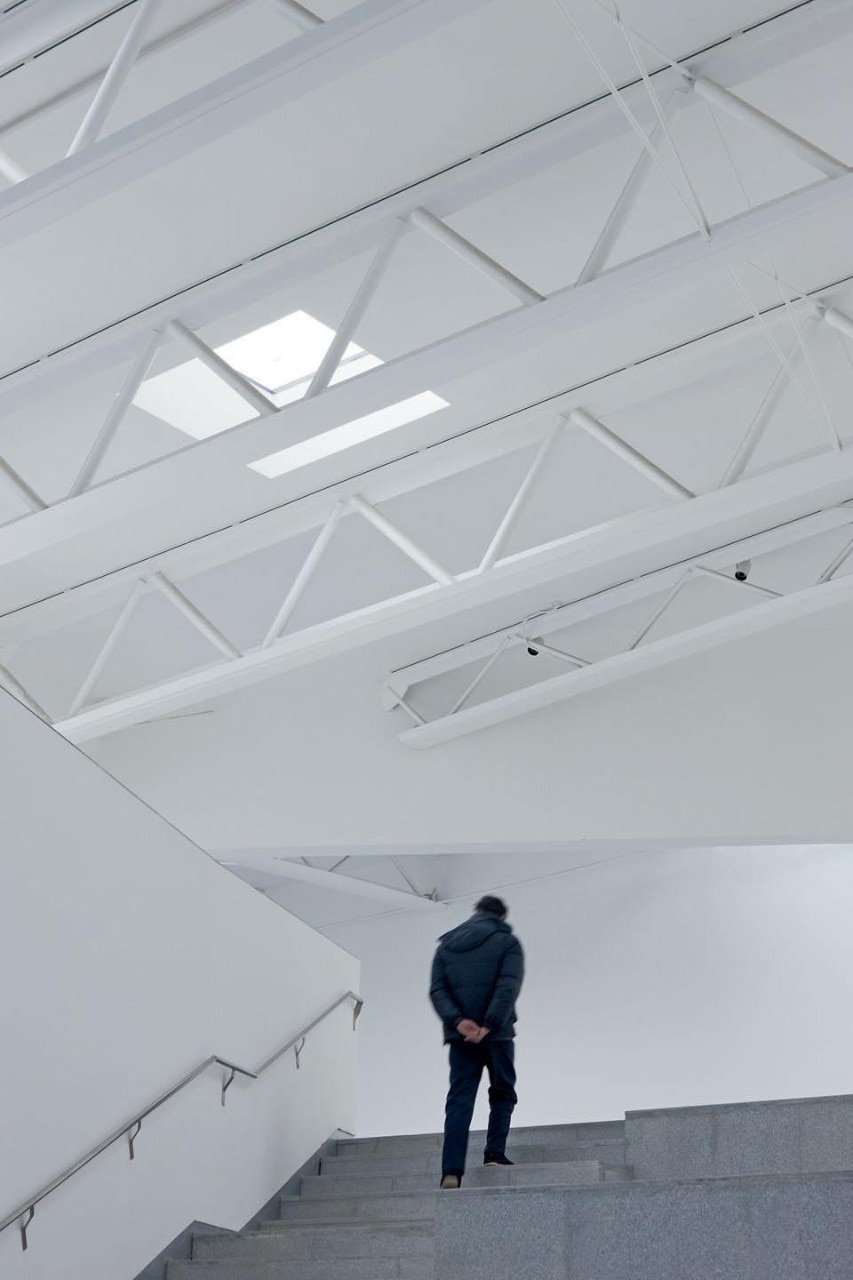
The museum is organised in two parts: a heavy ground floor and the translucent G-shaped plan circling above. At its base, a series of angular walls form enclosures like an abstracted Chinese walled garden. Cast with a bamboo formwork that has left a horizontal ribbing underlining their connection to the landscape and painted charcoal black to densify their gravity, they intersect to form the base of the building—what in other more typical architectural arrangements would be described as a plinth. Out of this rises the body of the building, clad in translucent polycarbonate with its double wall cells giving a vertical grain that accentuates its verticality. Way overhead, twisted into sculptural form, the building's translucent whiteness almost evaporates into the sky.
Though it functions as an image, the Contemporary Art & Architecture Museum possesses a whole host of sensations and experiences that are unphotographable
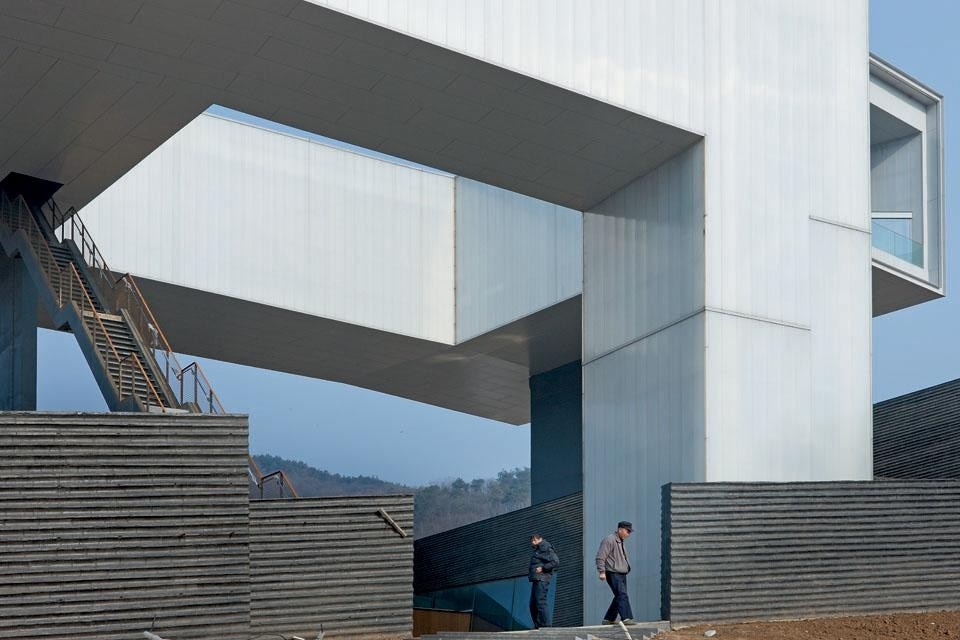
But to get up there, pre-completion, I had to go in backwards, up the fire escape, which might just be the strangest and most unsettling moment in the building. Walking up a straight run of flight after flight of unsupported steel staircase— usually the most banal of architectural elements—becomes a surreal experience. The logic of the construction—elsewhere sculptural—comes to bear on this simple piece of building, inverting a normally incidental moment. It is stretched into the best kind of spectacular dimension, an ordinary spectacular. (Just a note: if you suffer from vertigo, try not to get caught in a fire here.)
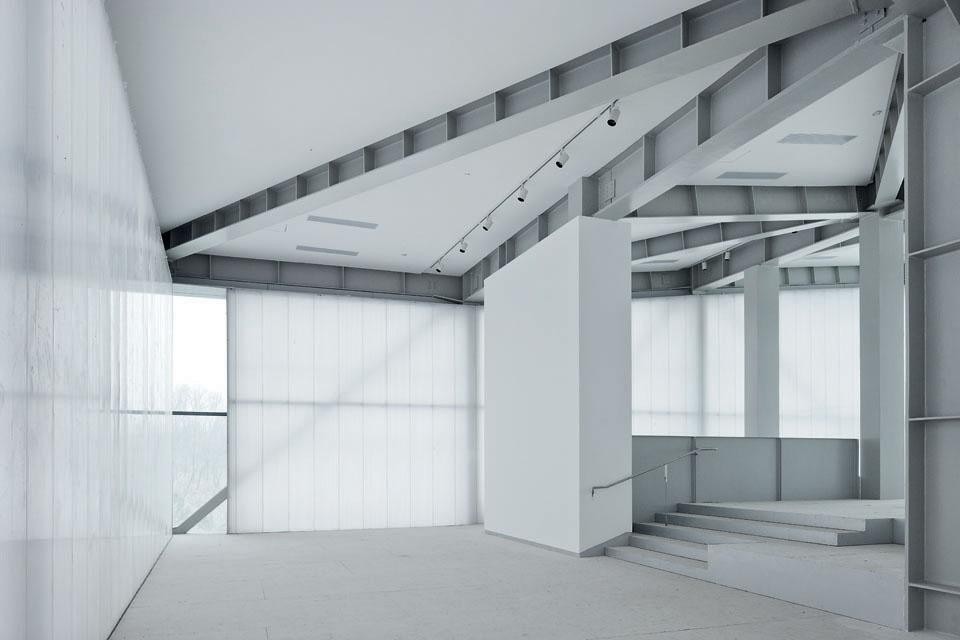
Once in the upper galleries, the sensation remains less than real, even if it's not quite so surreal. They are lightweight, framed in steel with the glow of twin-wall to their outer skin. Strangely, even though we've come up so high, the views outside are heavily rationed by slivers of glass set into the polycarbonate skin, allowing us only fleeting glimpses. Even the balcony—where the view over the whole complex is at last thrown wide open—is controlled, set behind a solid core. It is as though the idea of being elevated is prioritised over the physical sensation. The galleries have that close intimacy of being in a cloud rather than offering an angel-eyed view over the landscape. In this, as elsewhere, the building does two things at the same time—though dramatic and extraordinary it simultaneously underplays these qualities. Like much of Holl's work, for all the formal boldness—all that cantilevering and vertiginous height—there is a more subtle sensation, a light, tentative quality.
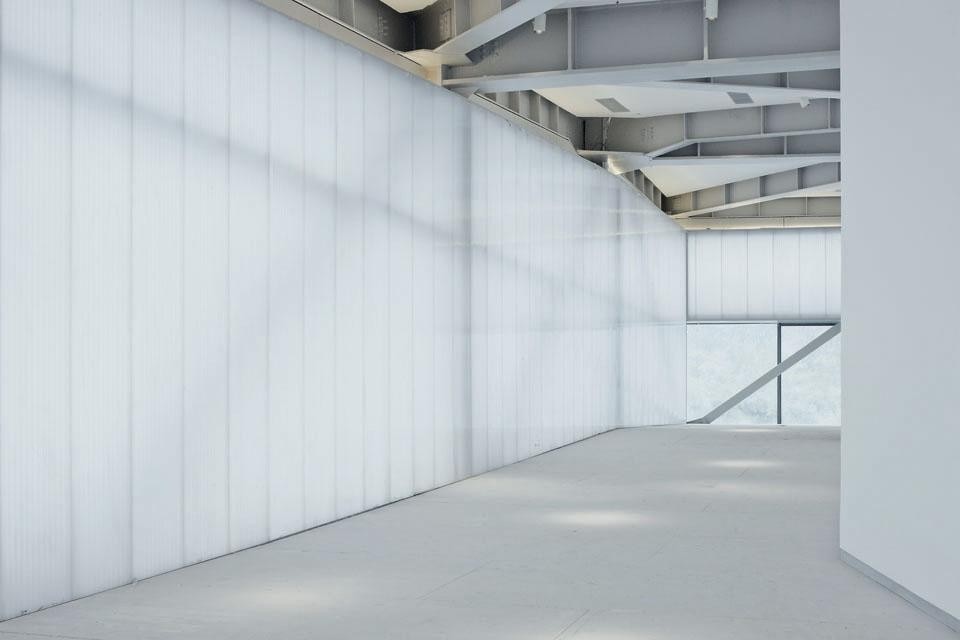
The way architecture is conceived is the limit of what it can become. The modes of representation within which architecture is imagined transmit into the eventual built form. Here perhaps is the trace of Holl's watercolours resonating within the architecture. It's hard, for example, to imagine being angry or declamatory making a watercolour. It is a medium of different, more subtle registers. Somehow we feel these watery, dissolving sensations through the spatial and material sensations of the building.
The museum—and indeed the entire development—tells us much about architecture's position in contemporary culture and of architecture's own internal culture. That is to say what architecture is used for and, in turn, how it uses for its own ends the opportunities with which it is presented.
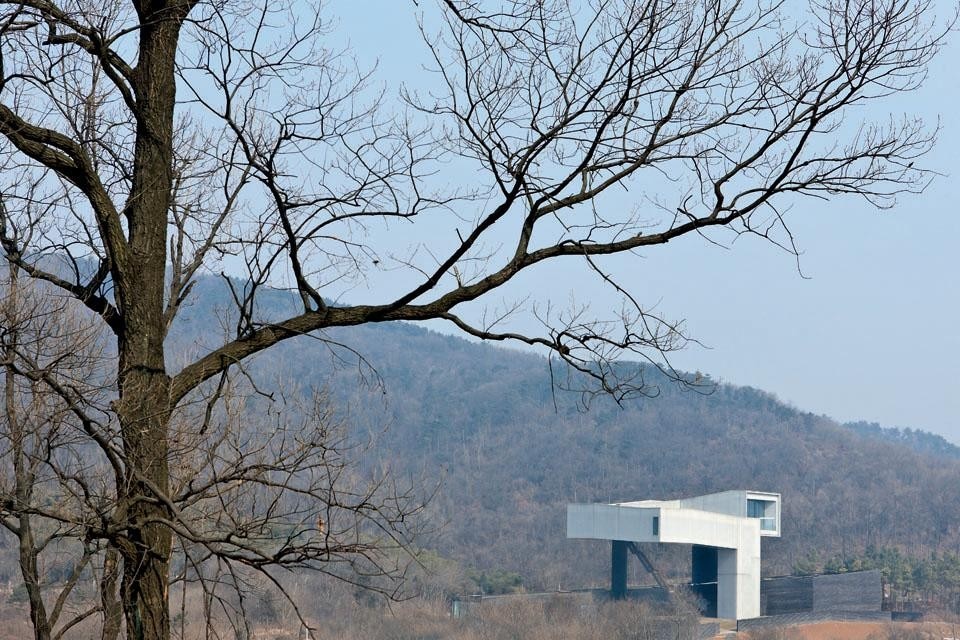
It is fortunate that right now architecture has enough disciplinary narcissism to delight in becoming the subject itself. Under these conditions architecture being Architecture is the primary function of architecture.
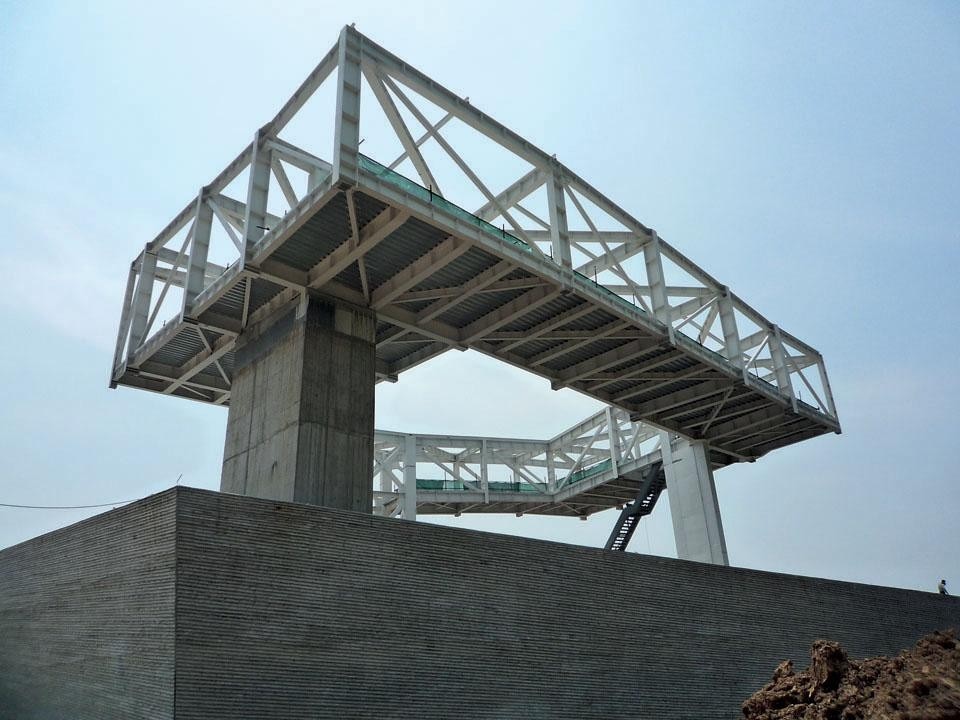
If Holl's Contemporary Art & Architecture Museum is an example of this tendency, we can also see that it is a condition which can produce an architecture that is delicate, strikingly beautiful, texturally rich and spatially engaging. Though it functions as an image, it possesses a whole host of sensations and experiences that are unphotographable.
The museum also poses a question: what happens when you turn architecture into the object of curation? How should we understand a museum—an architecture museum at that—that is contained within a museum context? Has architecture here swallowed itself and turned inside out?
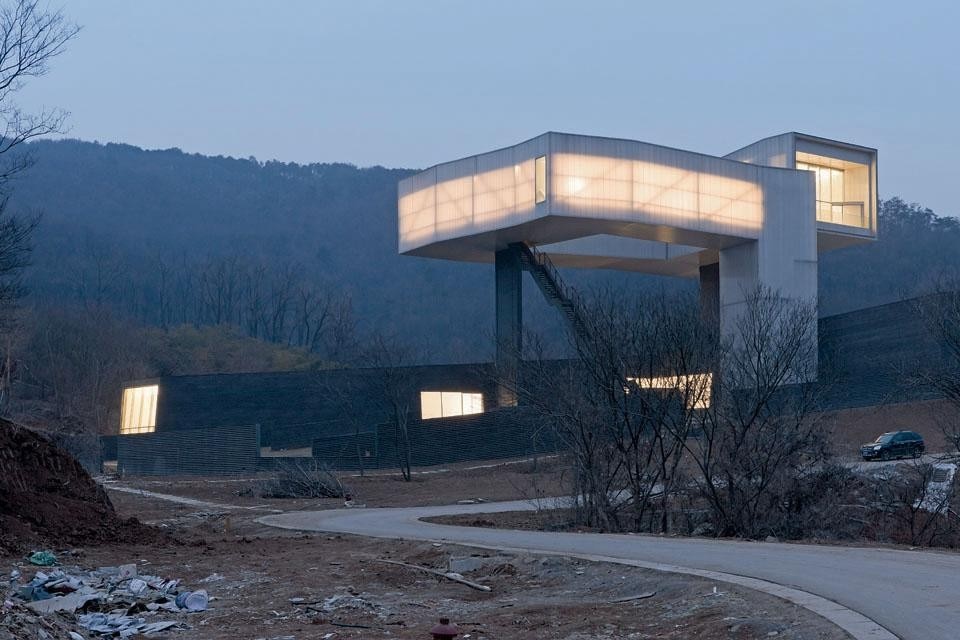
CIPEA is fascinating because it accelerates this latent aspect of contemporary architecture. In doing so, it alters—and possibly inverts—the usual circumstances of architecture as an activity, project and product. Architecture is no longer a way of responding to the world; it is the world—or at least its own version of the world.
Design Architect: Steven Holl Architects (Steven Holl, Li Hu)
Associate-in-Charge Architect: Hideki Hirahara
Project Architects: Clark Manning, Daijiro Nakayama
Project Team: Joseph Kan, Jongseo Lee, Richard Liu, Sarah Nichols
Associate Architect: Architectural Design Institute, Nanjing University
Structural engineering consultant: Guy Nordenson and Associates
Lighting design: L'observatoire International
Client: Nanjing Foshou Lake Architecture and Art Developments ltd


